
Final Fantasy IX at 20 years old: developers reflect on the creation of a classic
Every entry in the Final Fantasy series is unique, but even among the eclectic ranks of the numbered FF titles, Final Fantasy IX is special. It is the end of an era, the start of something new, and an acknowledgement of the series' new-found success in the West. It is also brilliant.
Final Fantasy IX is also quite special to RPG Site. A quick self-indulgent history lesson: this website was founded by friends who met through the Final Fantasy community and built the largest Final Fantasy IX fan site online, launched on June 28, 2000 - mere weeks before the game's Japanese release. Much has changed, but years later, we are still at it - and it's all thanks to this game.
To celebrate the twentieth anniversary of this stone-cold classic, we thought we’d go back to the source: to some of the Final Fantasy IX staff still working at Square Enix. With them, we take a trip down memory lane, learning about the game’s development - and how it was a pioneer of an international Final Fantasy development team long before later games would embrace a multicultural staff.
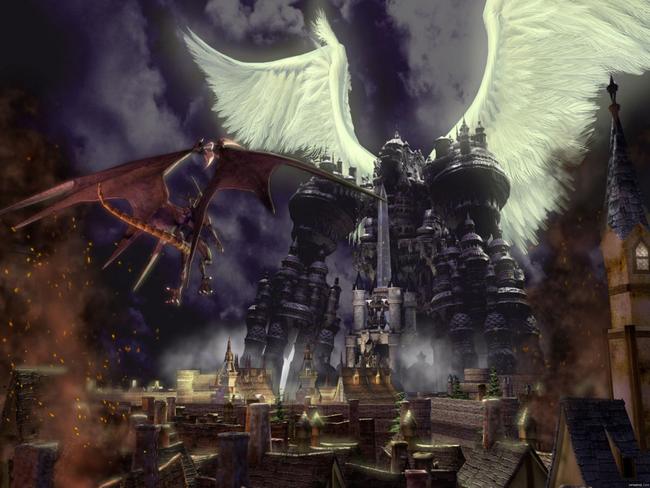
When Final Fantasy IX was in development some twenty years ago, Square was in the midst of enormous change. The incredible success of Final Fantasy VII had catapulted the company to new heights, defining a new future for the series at the cutting-edge of cinematic video gaming. At the same time, Square was in the midst of experimenting with cinema proper, hard at work on the ill-fated Final Fantasy movie.
After a little over a decade, Final Fantasy was moving on, morphing into something new, spearheaded by different staff, promoted up into senior positions. All of this change seemingly prompted pause for thought, and an idea was born in the mind of Final Fantasy creator Hironobu Sakaguchi: a celebratory throwback.
"Final Fantasy IX was led and written by Hironobu Sakaguchi, so I think Sakaguchi’s vision and the world he wanted to create really came through," Final Fantasy IX producer and Square mainstay Shinji Hashimoto tells RPG Site.
So different to Final Fantasy VII and VIII was it that the game's throwback nature caused some fans to initially speculate that it began life as 'Final Fantasy Gaiden', a non-numbered spin-off side story. Hashimoto rubbishes this - it was always intended as a numbered entry, developed more directly under Sakaguchi's lead.
Thus, at one point in the late nineties, the Final Fantasy series briefly split in multiple directions. In Tokyo, control of the series shifted to names now synonymous with leadership of the franchise today. Meanwhile in the Hawaii offices initially created for film studio Square Pictures, Sakaguchi remained more directly involved in a new entry in the series.
"We were working with a whole new structure – a branch of a Japanese company, but in Honolulu, Hawaii," says Hashimoto. "It was a dream project, jointly undertaken by Japanese and American staff, and so I remember it well."
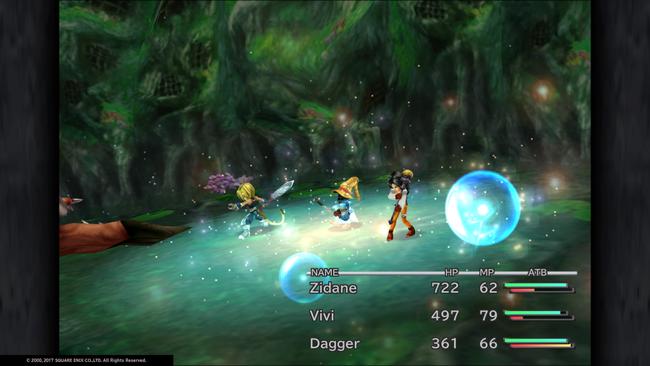
The impact of a large part of a Final Fantasy title's core development taking place in an American territory was profound. Much was made of Final Fantasy XV's international, multicultural development team - but the secret is that it wasn't really the first Final Fantasy game developed this way.
Most of the game's art was defined in Honolulu, and this perhaps makes Final Fantasy IX as revolutionary as Final Fantasy VII before it. While still Japanese-led, its development staff was a truly international team with Hollywood talent, as Final Fantasy IX character artist Toshiyuki Itahana recalls.
"Most of the artwork for Final Fantasy IX was created in Honolulu, excluding the weapons and some NPC designs, like the dwarves," Itahana says as part of RPG Site’s Final Fantasy IX anniversary interview.
"The majority of staff were Japanese, but amongst the background designers, we had staff from Germany, someone from France who spoke five languages, American staff that had worked on matte paintings for the movie Titanic, and Korean staff working on designing gadgets. It was a team from all around the globe."
Where Final Fantasy VII stepped away from the traditional fantasy visuals for a steampunk aesthetic, Final Fantasy IX equally has a unique sense of style. Many attribute this as simply a return to medieval fantasy, but it is something more, something new: a view of that medieval fantasy filtered through multiple international perspectives.
This design would go on to trickle into many other areas of Final Fantasy IX's design. Composer Nobuo Uematsu took a two-week trip to Europe, using visits to ageing German castles to inspire his direction for the game's score.
"Final Fantasy IX might seem like a medieval European fantasy at first glance, but all the art designers had really individual taste," says Itahana. "The collaboration between all their styles created a uniquely exotic atmosphere that breaks out of that European fantasy mould."
As producer, Hashimoto's job was to coordinate the Final Fantasy IX teams in Tokyo and Honolulu. "There were lots of artists of different nationalities there, and I think this gave the game a real depth," he says.
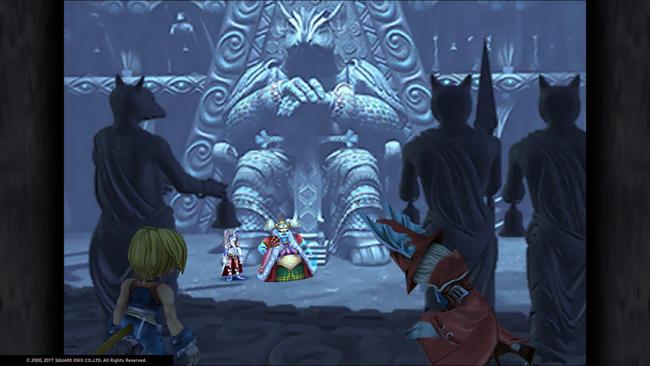
Whatever you might define the result as, it is surely something special. That this was something different and special was even clear to the staff from early on, as Itahana recalls.
"Initially, I was sitting next to the Final Fantasy IX development team and working on Chocobo’s Dungeon 2. By the time I joined the Final Fantasy IX team, they had already completed the concept art for Alexandria Castle," Itahana explains.
"When I saw the art, I remember being surprised at what a fantastic design it was. There was a real sense that it was actually lived in. It was so detailed that you could look at a wall and imagine how it would feel to the touch. Knowing that I would be drawing the characters to inhabit this world was really exciting.
"I particularly like the backstreets in Alexandria. The castle peaks through cracks in the rooftops, the cobbled streets are strangely warped, and there are hidden underground entrances to secret rooms - I’d like to live in that secret underground space."
The Final Fantasy IX project's international nature is described as challenging by producer Hashimoto, who recalls nevertheless being uplifted by the year-round sunny weather in Honolulu, glimpsed through a computer screen in weekly trans-Pacific conference calls. Despite the difficulty, he also sees the value of the Honolulu production.
"I'm very glad to have been involved in this ground-breaking, albeit difficult, project," Hashimoto says. "I’m very proud of the collaboration between the incredible international team, and I’m very proud that the game is still loved to this day."
One character in the game was actually designed by Itahana as a tribute to the game's Hawaiian development location: the axe-wielding bounty hunter Lani.
"There’s said to be a goddess called Pele living in the Kīlauea volcano on Hawaii," explains Itahana. "She’s a very passionate goddess with a fiery temperament, and the volcano erupts when she’s angry.
"When I heard this story, I wanted to design a female warrior with a fiery temper who was fiery like Pele – and that’s how I came up with Lani. Her giant, red weapon is inspired by an erupting volcano."
Itahana was responsible for much of the game's character design, which matches its art in being a special and unique departure from the rest of the FF series. From this point on, Final Fantasy would generally feature characters with realistic proportions and photo-realistic visuals with an animated twist - but Final Fantasy IX was a last hurrah for a more stylized look, at least in the numbered series.
Itahana credits the overall direction of the game's look to art director Hideo Minaba, and cites the unique world of 1982 movie The Dark Crystal, with its sharply realized world and animatronic characters with exaggerated features, as an influence.
Behind all of this also is the influence of Final Fantasy creator Hironobu Sakaguchi and Final Fantasy IX director Hiroyuki Ito. While he was busy attempting to take the series to cinematic success with the ill-fated The Spirits Within, he was still hands-on with the production of the ninth entry.
In fact, Itahana recalls a situation toward the end of Final Fantasy IX’s development where Sakaguchi’s vision and perfectionism caused quite the storm among developers: a significant, last-minute change to a major character.
“As development entered the final stages, we were told that the Producer, Hironobu Sakaguchi, wanted us to change Garnet’s design. He didn’t think she looked charming enough for a heroine,” Itahana recalls.
“Garnet’s in-game models and motions had already been created, so when the message was passed on, there was a big commotion. I worked together with the Art Director, Hideo Minaba, to create some new design proposals, using as many of the pre-created motions as possible.
“In these proposals, we put forward lots of ideas – a lighter-haired Garnet, an outfit that was more like a dress… The finalised design for Garnet came from one of these proposals, which altered her hairstyle and outfit.”
Garnet is just one of several iconic designs to come out of Final Fantasy IX - and the title is now fondly remembered for having a personality-stuffed cast with designs that stand out from the rest of the series. That, too, is part of why the game is so special.
"There is a repeating motif in Final Fantasy IX of on-stage performances, and so I think the style is a good match," says Itahana. "The character’s large limbs make it easy to convey emotions through exaggerated reactions, just like actors do in theatre.
"Final Fantasy IX has a style that appeals to both adults and children, so I’d love to have another opportunity to work in the same style again, whether it’s a numbered Final Fantasy entry or not."
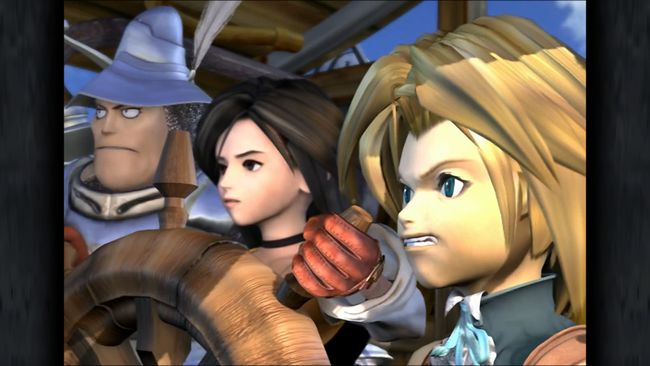
Itahana's suggestion that he would like to return to the world of Final Fantasy IX is sure to excite the game's many fans, who have clamored for a return to that game's style after a string of games more in the vein of Final Fantasies VII and VIII. In RPG Site's poll for the Final Fantasy 30th anniversary, Final Fantasy IX placed second, with thousands of users voting it as their favorite entry in the series.
The team behind the game has seen similar, with Itahana recalling a recent Japanese TV program where Final Fantasy IX came second in a fan vote - just behind Final Fantasy VII, just as in our poll.
"I think the enduring popularity of Final Fantasy IX is due to the endearing character design and style which lots of people liked, as well as the appeal of the fantastical world," says Itahana.
"Another reason is the story. It’s a story about the meaning of life – which is a universal question for everyone living in this world, including myself. Characters of different races and different ways of thinking support each other, sometimes disagreeing, as they all grapple with this question. That kind of story will always resonate, I think."
While the characters and world of Final Fantasy IX are cited by both Hashimoto and Itahana as stand-outs from the development of the title ("I could talk about the great story and characters forever", Itahana says), both cite its at the time unique development staff make-up as the most memorable part of development. Square had never made a game quite like this before - and wouldn't again for a very long time.
"If I had to choose the thing I’m most proud of, I’d have to say it was all of the team in Honolulu and Tokyo that worked together to create Final Fantasy IX," says Itahana.
"The world of Final Fantasy IX was created because everyone brought their unique individuality and mixed it together. In a sense, I don’t think that anyone could have predicted at the beginning of development how the style of Final Fantasy IX would finally turn out.
"I’m immensely proud to have been able to work alongside everyone, and I won’t forget it as long as I live. I still treasure the photo we took together!"
You can now see that photo, straight from Itahana, below.
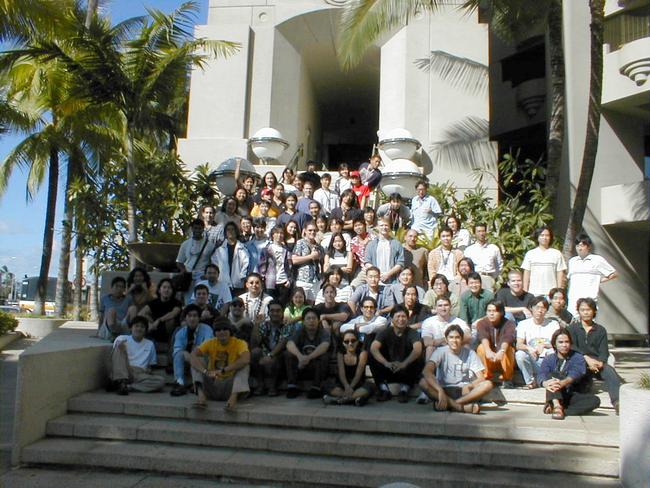
As for that world they built? Well, in truest Final Fantasy tradition, it remains untouched - airbrushed to modern resolutions in re-releases but otherwise exactly as it was to the very first players on June 7, 2000 - charming, beautiful and full of character.
Except, of course, that Final Fantasy tradition has eroded over the years since the original release of Final Fantasy IX. The fourth, seventh, tenth and thirteenth Final Fantasy titles have been expanded with sequels and spin-offs - and Itahana admits, twenty years later, that he still thinks about the game regularly. It is, as the title of the first track on Final Fantasy IX's soundtrack calls it, a place to call home.
"Final Fantasy IX is loved by the fans, but it’s also very loved by us, the development team," says Itahana. "I would be delighted if, respecting the wishes of the original development team, there could one day be the opportunity to continue the story of Final Fantasy IX, which meant so much to all of us."